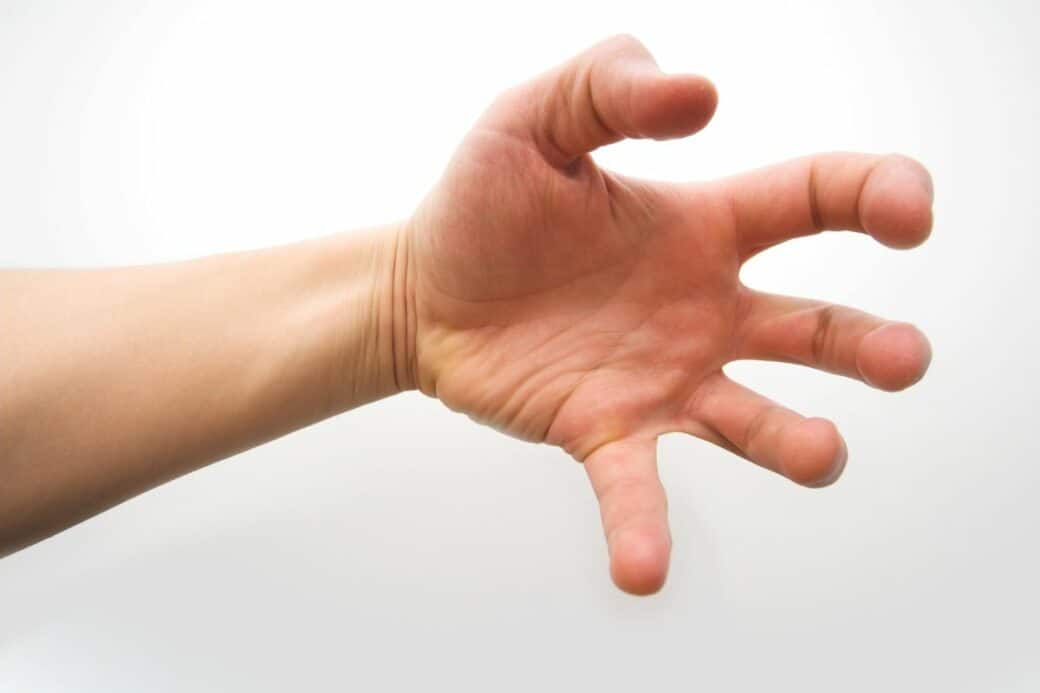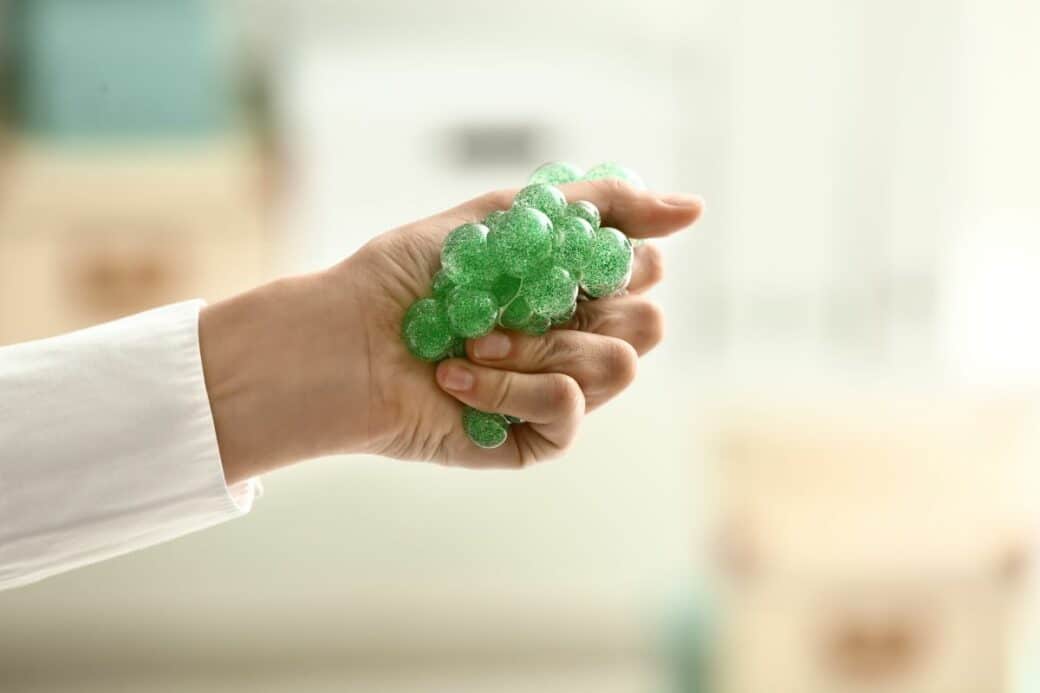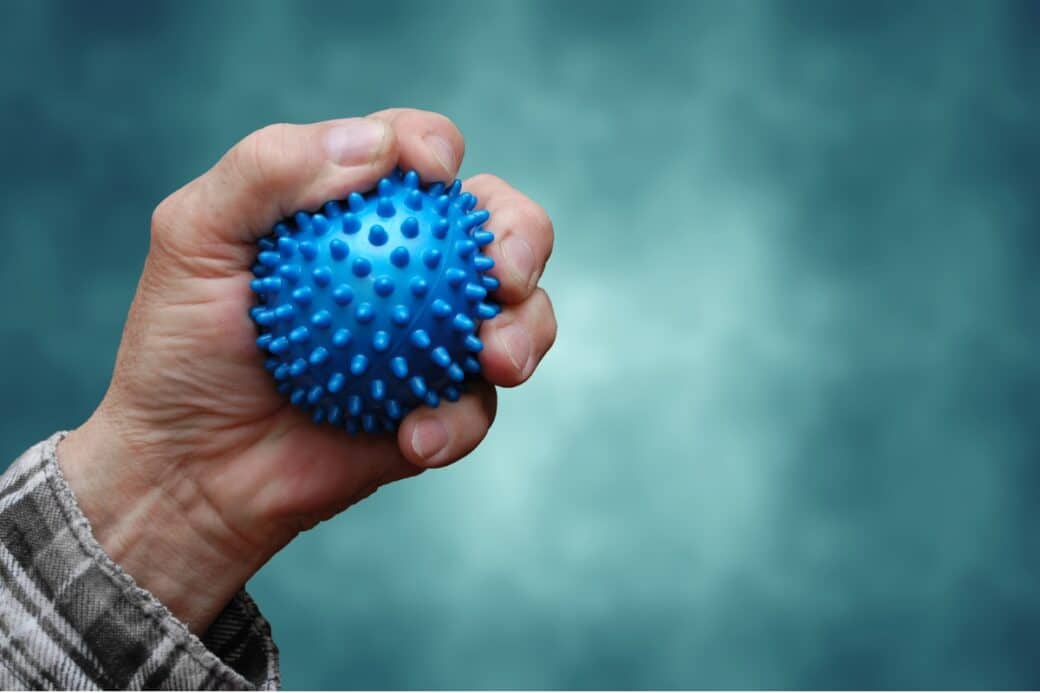Are you tired of constantly struggling to maintain a firm grip? Look no further – introducing the solution to all your grip woes: stress balls hand grips. Designed to improve your grip strength, these handy stress balls are the ultimate tool to enhance your performance in various activities. Whether you’re an athlete looking to enhance your performance, a musician looking to strengthen your fingers, or simply someone who wants to effortlessly open jars, these stress ball hand grips are here to save the day. Say goodbye to slipping objects and hello to a stronger grip with Stress Balls Hand Grips.

Stress Balls Hand Grips: Understanding the Importance of Strong Hand Grips
The Connection between Hand Grips and Overall Strength
Having a strong grip is not just about being able to crush someone’s hand during a handshake – it is a sign of overall strength and fitness. Your hand grip strength is essential for performing various daily activities, such as carrying heavy objects, opening jars, and even maintaining good posture. The muscles in your hands and forearms play a crucial role in supporting your wrists, arms, and shoulders. When these muscles are weak, it can lead to imbalances and injury risks in other parts of your body.
Implications of Weak Hand Grips
If you have weak hand grips, you may find it challenging to perform simple tasks that require a firm hold. Something as simple as turning a doorknob or holding onto a bar during a workout can become difficult. Weak hand grips can also limit your participation in sports activities, where a strong grip is often crucial, such as rock climbing or tennis. Additionally, weak hand grips can affect your ability to maintain a good posture, as the muscles in your hands and forearms play a role in supporting your upper body.
Benefits of Improved Hand Grips
On the other hand, having strong hand grips can bring numerous benefits to your daily life. Firstly, improved hand grips can enhance your performance in various sports and physical activities. A strong grip allows you to have better control over sports equipment, such as tennis rackets or golf clubs, resulting in more accurate shots and a competitive advantage. Strong hand grips also play a crucial role in enhancing your functional strength, allowing you to carry heavier loads and perform better in weightlifting exercises. Moreover, research has shown that individuals with stronger hand grips tend to have better cognitive functions and overall health, making it a vital aspect of maintaining a high quality of life.
Introduction to Stress Balls and Hand Grips

Definition and Function of Stress Balls
Stress balls are small, squeezable objects typically made of foam or rubber. They are designed to be held, squeezed, and manipulated with your hand muscles. Stress balls are commonly used to relieve stress and tension by providing a calming effect through repetitive squeezing motions. This simple activity can help relax your mind and body, as well as relieve muscle tightness in your hands and forearms.
Definition and Function of Hand Grips
Hand grips, as the name suggests, are specialized devices designed to improve hand grip strength. They are usually made of metal or plastic and come in various shapes and sizes. Hand grips work by providing resistance for your hand muscles to squeeze against. By continuously squeezing a hand grip, you can progressively strengthen your hand muscles and improve grip strength over time.
Comparison between Stress Balls and Hand Grips
While both stress balls and hand grips are used to improve grip strength, they have distinct differences in terms of their design and primary functions. Stress balls primarily focus on stress relief and muscle relaxation, with grip strength improvement being a secondary benefit. On the other hand, hand grips are specifically designed for grip strength training and muscle development. They provide targeted resistance to challenge your hand muscles and promote strength gains. Depending on your goals and preferences, you can choose to incorporate stress balls, hand grips, or both into your grip training routine.
How Stress Balls Can Improve Your Grip
Mechanics Behind Stress Balls and Hand Gripping
The repetitive squeezing motion involved in using stress balls engages and activates the muscles in your hands and forearms. This continuous contraction and relaxation of the hand muscles help to increase blood flow and promote muscle endurance. Over time, consistent use of stress balls can strengthen the muscles involved in your grip, resulting in improved grip strength.
Different Exercises for Grip Improvement
There are various exercises you can do with stress balls to improve your grip. One common exercise is the squeezing exercise, where you simply squeeze the stress ball as hard as you can and hold for a few seconds before releasing. Repeat this exercise for several sets, gradually increasing the duration and intensity of the squeeze. Another exercise is the finger extension exercise, where you place the stress ball in the palm of your hand and use your fingers to open your hand and stretch the stress ball. This exercise helps in strengthening the muscles responsible for opening your hand and extending your fingers.
Proper Usage and Techniques for Stress Balls
To make the most out of your stress ball exercises, it is important to use them correctly. Start by choosing a stress ball with an appropriate level of firmness and resistance. Begin with lighter resistance if you are a beginner or have existing hand strength limitations. As you progress, you can gradually increase the resistance of the stress ball to continue challenging your muscles. During the exercises, focus on maintaining a firm grip and squeezing the stress ball with controlled and deliberate movements. Avoid excessive force or overexertion, as this can lead to strain or injury. Consistency is key, so aim to incorporate stress ball exercises into your daily or weekly routine to see noticeable improvements in your grip strength.
Types of Stress Balls
Fabric Stress Balls
Fabric stress balls are made of soft, pliable fabric and are filled with small beads or grains. They provide a comfortable and squishy texture, making them ideal for stress relief and gentle hand-strengthening exercises. The fabric covering also offers tactile stimulation, which can enhance sensory feedback during squeezing exercises.
Foam Stress Balls
Foam stress balls, as the name implies, are made of foam material. They are lightweight, easy to grip, and provide a moderate level of resistance. Foam stress balls are popular among individuals who prefer a softer texture and require a gentle yet effective grip-strength workout.
Gel Stress Balls
Gel stress balls are filled with a gel-like substance that provides a unique tactile experience. The gel filling allows for a more malleable and flexible texture, offering a different squeezing sensation compared to other stress ball varieties. Gel stress balls are known for their durability and ability to retain their shape even after frequent use.
Rubber Stress Balls
Rubber stress balls are made of high-density rubber or latex material, providing a firm and durable option for grip training. They offer a higher level of resistance compared to fabric or foam stress balls, making them suitable for individuals seeking a more challenging grip workout. Rubber stress balls also provide a good grip, ensuring that the ball won’t slip out of your hand during exercises.
Choosing the Right Stress Ball for You
When selecting a stress ball, consider your specific needs and preferences. If you are primarily seeking stress relief and relaxation, a fabric or gel stress ball would be a suitable choice. For those focused on grip strength improvement, foam or rubber stress balls with varying levels of resistance are recommended. Experiment with different textures and firmness levels to find the stress ball that feels comfortable and effective for your grip training needs.
How Hand Grips Boost Your Grip Strength
Working Principle Behind Hand Grips
Hand grips are based on the principle of progressive resistance training. They provide a controlled and consistent resistance for your hand muscles to work against, promoting muscle activation, strength gains, and endurance. By repetitively squeezing and releasing a hand grip, you target and engage the muscles responsible for grip strength, including the muscles in your fingers, palm, and forearm.
Different Types of Hand Grip Exercises
Hand grips offer versatility in terms of the exercises you can perform for grip improvement. One popular exercise is the static hold, where you squeeze a hand grip and hold the contraction for a specific duration. This exercise helps to build endurance and grip strength. Another exercise is the repetition squeeze, where you repeatedly squeeze and release the hand grip for a certain number of repetitions. This exercise targets muscle hypertrophy and promotes overall grip development. Additionally, a finger extension exercise can be done with certain hand grips to balance the muscles involved in grip strength.
Proper Usage of Hand Grips
To maximize the benefits of using hand grips, it is important to use proper technique and adhere to a consistent training routine. Start with a hand grip that provides an appropriate level of resistance but is not overly challenging. The idea is to gradually progress to heavier resistance as your hand muscles become stronger. When squeezing the hand grip, focus on maintaining proper form and avoid using momentum or other body parts to assist in the squeezing motion. This ensures that your hand muscles are effectively targeted and receive the intended workout. Consistency is key, so aim for regular grip training sessions to see long-term improvements in your grip strength.
Types of Hand Grips
Spring Coil Hand Grips
Spring coil hand grips are one of the most common types of hand grips available. They consist of two handles connected by a coiled spring mechanism. The level of resistance can be adjusted by squeezing the handles closer together or further apart. Spring coil hand grips are compact, portable, and suitable for individuals at various fitness levels.
Adjustable Resistance Hand Grips
Adjustable resistance hand grips are similar to spring coil hand grips but offer an additional feature of adjustable resistance. They typically have a knob or screw that allows you to modify the level of resistance according to your strength and training needs. This versatility makes adjustable resistance hand grips suitable for both beginners and advanced users.
Finger Extension Hand Grips
Finger extension hand grips specifically target the muscles responsible for opening and extending your fingers. They consist of a single handle with an extension mechanism that you manually pull against to open the grip. Finger extension hand grips are beneficial for individuals seeking to balance their grip strength by strengthening the muscles involved in finger extension.
Choosing the Right Hand Grip for You
Consider your specific goals, fitness level, and comfort when choosing a hand grip. If you are new to grip training or have limited hand strength, spring coil hand grips or adjustable resistance hand grips are suitable options that allow you to start with lighter resistance and progress gradually. If you want to target finger extension strength, a finger extension hand grip would be a valuable addition to your training routine. Try different hand grips to find the one that feels comfortable and effectively challenges your grip strength.
Maintaining Your Stress Balls and Hand Grips
Cleaning Your Stress Balls and Hand Grips
Regular cleaning of your stress balls and hand grips is essential to maintain hygiene and extend their lifespan. Fabric stress balls can be cleaned by gently wiping them with a damp cloth or using mild soap and water. Foam stress balls can be washed with soap and water, but it is important to squeeze out excess water and allow them to air dry thoroughly. Gel and rubber stress balls can be wiped clean with a damp cloth and mild soap if necessary. To clean hand grips, wipe them down with a damp cloth or use a disinfectant spray. Avoid soaking hand grips in water or exposing them to excessive moisture, as it can damage the internal mechanisms or reduce their effectiveness.
Storage Tips for Stress Balls and Hand Grips
To maintain the longevity of your stress balls and hand grips, proper storage is crucial. Store stress balls in a cool, dry place away from direct sunlight to prevent discoloration or degradation. Avoid exposing them to extreme temperature fluctuations or storing them in overly humid environments, as moisture can promote mold or bacteria growth. Hand grips should be stored in a clean and dry location to prevent rust or damage to the internal springs. Consider using a dedicated storage container or bag to keep your stress balls and hand grips organized and protected.
When to Replace Your Stress Balls and Hand Grips
Over time, stress balls and hand grips will experience wear and tear due to regular use. It is important to monitor their condition and replace them if necessary. Signs that indicate it may be time to replace your stress ball include visible tears or punctures, loss of shape or firmness, or a strong odor that cannot be removed through cleaning. For hand grips, check for any signs of dysfunctional mechanisms, such as broken springs or handles, as this can affect the effectiveness of your grip training. If you notice any significant damage or decline in performance, it is advisable to invest in a new stress ball or hand grip to ensure optimal grip training results.
Safety Measures when Using Stress Balls and Hand Grips
Avoid Overstraining Your Hands
While stress balls and hand grips are effective tools for grip training, it is essential to listen to your body and avoid overstraining your hands. Start with lighter resistance or softer stress balls if you are a beginner or have limited hand strength. Progress gradually and increase resistance or intensity only when your hand muscles are ready. Pushing beyond your limits too quickly can lead to muscle strain, joint pain, or potential injuries. Listen to any discomfort or pain signals from your hands and adjust your training accordingly.
Recognizing Signs of Grip Training Overuse
Grip training requires recovery and adaptation time for your hand muscles just like any other form of training. Overuse or excessive training frequency without adequate rest can lead to overuse injuries, such as tendonitis or muscle imbalances. Pay attention to any signs of overuse, including persistent pain, weakness, swelling, or a decrease in performance. If you experience any of these symptoms, take a break from grip training and allow your hand muscles to rest and recover. Consult with a healthcare professional if symptoms persist or worsen.
Proper Rest and Nutrition for Optimum Grip Training
Optimal grip strength improvements require a balance of training, rest, and proper nutrition. Allow your hand muscles at least 48 hours of rest between training sessions to recover and adapt. During rest days, focus on other areas of fitness or engage in low-impact activities that do not strain your hands excessively. Additionally, ensure that your diet provides adequate nutrients, such as protein, healthy fats, and micronutrients, to support muscle recovery and growth. Hydration is also important for maintaining muscle function and preventing muscle cramps.
From Rehabilitation to Mastery: A Journey in Grip Training
Using Stress Balls and Hand Grips for Injury Rehabilitation
Stress balls and hand grips can be valuable tools in injury rehabilitation, particularly for hand and wrist injuries. Under the guidance of a healthcare professional, stress balls and hand grips can help restore strength, flexibility, and coordination in injured hands or wrists. The controlled resistance provided by stress balls and hand grips promotes blood flow, mitigates muscle atrophy, and aids in joint mobility recovery. However, it is crucial to work with a professional to develop a rehabilitation plan tailored to your specific injury and recovery needs.
Developing Ambidexterity with Stress Ball and Hand Grip Training
Grip training with stress balls and hand grips not only strengthens your dominant hand but also provides an opportunity to develop ambidexterity. By incorporating exercises that target both hands equally, you can improve your non-dominant hand’s grip strength and coordination. This not only enhances your overall grip strength but also carries over to other activities, such as playing musical instruments, writing, or participating in sports that require bilateral coordination.
Progressive Overload in Grip Training
Like any form of strength training, grip training benefits from the principle of progressive overload. As your hand muscles adapt and become stronger, it is important to gradually increase the resistance or intensity of your stress ball or hand grip exercises. Progressive overload challenges your muscles, stimulates further strength gains, and helps you avoid plateaus in your grip training progress. Keep track of your training volume, and resistance levels, and gradually increase them over time to ensure ongoing improvements in grip strength.
Testimonials: Success Stories in Grip Improvement
Personal Accounts of Improved Sporting Performance
Many athletes and sports enthusiasts have experienced significant improvements in their performance due to grip strength training with stress balls and hand grips. Wrestlers, for example, rely heavily on grip strength to control their opponents, and by incorporating grip training into their routines, they can enhance their ability to maintain holds and improve overall performance. Similarly, golfers often note that improving grip strength allows for better control of the club during swing movements, resulting in increased accuracy and distance. These personal accounts highlight the real-world benefits of grip training and how it can positively impact athletic performance.
Recovery Stories from Hand-related Injuries
Individuals who have undergone hand-related injuries, such as fractures or tendon damage, often find grip training with stress balls and hand grips a crucial part of their recovery journey. By gradually reintroducing strengthening and rehabilitation exercises, these individuals can regain lost grip strength, restore hand function, and reduce the risk of re-injury. Grip training provides a controlled and targeted method to rebuild hand muscles, improve joint stability, and enhance overall hand dexterity. These recovery stories demonstrate the transformative power of grip training in overcoming hand-related injuries.
General Life Improvement through Better Grip Strength
Improving grip strength with stress balls and hand grips has also been reported to have a positive impact on various aspects of daily life. Individuals with increased grip strength find it easier to perform everyday tasks, such as carrying groceries, opening jars, or lifting children. A stronger grip can also enhance one’s ability to maintain good posture and decrease the likelihood of developing musculoskeletal imbalances. Ultimately, better grip strength translates to improved functionality, reduced limitations, and an enhanced quality of life.
In conclusion, strong hand grips are essential for overall strength, functionality, and quality of life. Incorporating stress balls and hand grips into your training routine can significantly improve grip strength, endurance, and coordination. Whether you choose to use stress balls for stress relief or hand grips for focused grip training, consistency, proper usage, and gradual progression are key to achieving optimal results. With dedication and the right tools, you can embark on a journey of grip improvement that will positively impact various aspects of your life. So, grab a stress ball or a hand grip, and start strengthening your grip today!




